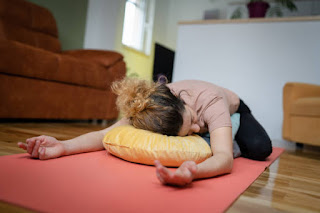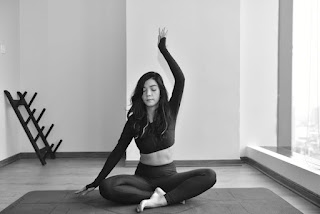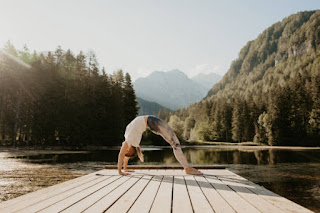Rest Days Done Right: Recharging Without Losing Momentum
Rest Days Done Right: Recharging Without Losing Momentum
Embracing Rest as a Key to Success in New Year’s Resolutions
The New Year brings a surge of motivation as we set resolutions with renewed hope and enthusiasm. In this excitement, it’s easy to overlook the importance of rest, focusing instead on progress and productivity. But rest days are not setbacks; they are the foundation of sustainable progress, allowing us to recover physically, refresh mentally, and ultimately keep our goals within reach. Without rest, the ambitious goals we set for ourselves can lead to burnout, diminishing the very energy we need to stay consistent.
Rest is more than a pause; it’s a conscious act of self-support, a moment to listen to the body and mind, understanding their rhythms and honoring their needs. For those working on New Year’s resolutions, rest days can be a powerful way to reflect on why these goals matter, to gain perspective, and to nurture the inner resilience needed for lasting change.
The Necessity of Rest for a Sustainable Journey
When we think of progress, the image that often comes to mind is one of continual effort—pushing through every day. But genuine progress has peaks and valleys; it isn’t a straight line. Just as athletes rely on rest days to repair and strengthen muscles, we, too, need rest days to rebuild our physical and mental reserves. For physical goals like daily exercise, skipping rest can lead to injury and fatigue. For mental or skill-based goals, constant effort without breaks can drain mental energy and hinder learning.
Each rest day is an opportunity to reset, recover, and return to our resolutions with renewed energy. Taking a day to recharge can deepen our relationship with our goals by giving us the mental space to reflect. Instead of measuring rest as “lost time,” consider it an investment in longevity. By embracing rest as part of your journey, you’re sending a message to yourself that sustainability matters and that rushing toward results isn’t the ultimate aim.
Redefining Rest: What it Looks Like for Different Goals
Rest can mean different things depending on your specific goals, but the essence is the same: stepping back from the intensity of your efforts without completely disconnecting from your intention. For physical resolutions, rest might look like gentle stretching or a relaxing walk, keeping the body engaged without strain. For mindfulness-based goals, rest might involve a short visualization exercise or a reflective journaling session, grounding you in your purpose without demanding focus.
Rest can also be a chance to broaden your perspective on your goals. If you’re learning a new skill, a rest day could mean watching a documentary or listening to a podcast that inspires your learning. The point is not to disconnect from your aspirations entirely but to honor them by taking a softer, more reflective approach. This subtle engagement keeps your mind attuned to your goals, even on days of low activity.
The Different Dimensions of Rest: Physical, Mental, and Emotional Rejuvenation
Rest is often misunderstood as merely physical. True rest, however, encompasses all aspects of our being—physical, mental, and emotional. Physical rest, like restorative yoga or simply taking a nap, provides a space for the body to heal and recharge. This type of rest is essential for anyone with fitness goals, as it prevents overuse injuries and muscle fatigue. Mental rest, meanwhile, helps clear the mind of constant stimulation. Taking a break from screens, meditating, or even enjoying quiet time in nature can renew mental clarity.
Equally important is emotional rest, which is about releasing the accumulated tensions of daily interactions, pressures, and expectations. Emotional rest might involve journaling about your journey, identifying any stressors around your goals, or practicing gratitude for the progress you’ve made. When we intentionally incorporate each dimension of rest, we create a holistic foundation that nourishes every part of us, setting us up for success.
Rest as a Means to Maintain Momentum Without Losing Purpose
One of the common fears about rest days is that they’ll disrupt our momentum, making it harder to return to our routine. But rest days, when approached with purpose, don’t break momentum; they enhance it. Reflective rest days help keep our “why” clear and allow us to check in with our progress. For example, if your resolution is to practice yoga daily, a rest day might involve taking a few minutes to stretch, breathe deeply, or visualize yourself achieving your yoga milestones.
If time constraints prevent you from your usual routine, consider using these days to connect with your goals in a lighter way. A five-minute breathing exercise, a quick check-in with your intentions, or even practicing mindful movements can help you feel connected. The key is not to abandon the habit but to adapt it, honoring your commitment without demanding perfection. By reframing rest as a mindful pause rather than a break, you reinforce your dedication.
Intentional Rest: Feeling Productive Even on Rest Days
For many, productivity feels deeply tied to action. But intentional rest allows us to feel productive in a quieter, more reflective way. On a rest day, consider using journaling to explore your feelings about rest and to reinforce your commitment to your goals. Reflect on what you’ve learned about yourself so far, and take time to appreciate small wins.
Engaging in light learning can also make rest days feel purposeful. If your goal involves learning a new skill, listening to a relevant podcast or reading an article can keep your mind engaged without taxing your energy. For those with fitness or mindfulness resolutions, focusing on self-care—like preparing a nutritious meal, meditating, or spending time outdoors—can align with your goals while allowing you to recharge. Through these small, intentional actions, you’ll find rest days becoming an integral, meaningful part of your journey.
Honoring Rest Through Reflective Practice
Journaling is a powerful tool for connecting with your goals on rest days. It allows you to examine how you feel about pausing, to explore your relationship with rest, and to gain insight into any resistance. Ask yourself: “How does rest make me feel? What role does it play in supporting my goals?” By bringing awareness to your thoughts and emotions around rest, you deepen your understanding of its role in your growth.
Another valuable journaling prompt is to consider how rest can contribute to your long-term vision. Visualize yourself achieving your resolution over time, and explore how rest days help build resilience, prevent burnout, and nurture your dedication. Reflecting on rest in this way can transform it from an obligation into a practice of self-compassion, reinforcing the mindset that rest is not the opposite of progress but a vital part of it.
How does rest make me feel? Reflect on any resistance, guilt, or relief you feel when you take a break, and consider why these feelings might arise.
What role does rest play in supporting my goals? Think about how rest days might contribute to your long-term success. Explore how they support you physically, mentally, and emotionally.
What’s one way I can use rest to strengthen my commitment to my goals? Identify specific actions you can take on rest days—like reflecting on your progress or practicing gratitude—to feel connected to your purpose.
What have I learned about myself through this journey? Use rest days as a time to reflect on any personal insights or strengths you’ve noticed since starting your resolution.
What are some small wins I can celebrate today? Take time to acknowledge the progress you’ve made, big or small, and appreciate how rest allows you to savor these moments.
How can I embrace rest as a part of my growth? Reflect on any shifts in perspective that could help you view rest not as an interruption but as an essential, valuable part of your journey.
Restorative Yoga and Meditation: Tools for Rejuvenation
Restorative yoga and guided meditation can be powerful ways to enhance rest days. A simple restorative yoga session can help reset the body and mind, especially when practiced with a focus on breath and presence. Consider poses like Child’s Pose, Supported Bridge, and Legs-Up-the-Wall, each held for a few minutes with deep breathing. These poses calm the nervous system, encourage gentle circulation, and release tension, helping the body fully relax.
For mental rejuvenation, a guided body scan meditation can be an effective tool. Lying down in a comfortable position, slowly focus on each area of your body, releasing any tension you find. This process not only relaxes the body but also trains the mind to cultivate awareness and acceptance—qualities that reinforce your commitment to rest as part of your journey.
Reclaiming Rest as a Path to Growth
Rest days are not simply breaks in the journey; they are stepping stones that keep us on track, building resilience and clarity as we work toward our New Year’s resolutions. By reclaiming rest as a purposeful, intentional practice, we give ourselves permission to recharge and grow, recognizing that slowing down is an act of wisdom, not weakness.
On your next rest day, pause with intention, reconnect with your purpose, and honor the progress you’re making. In doing so, you transform rest from a momentary relief into a foundational element of lasting change. Rest done right becomes a path to growth, renewal, and an essential part of the journey toward your best self.
Additional Resources
For those who want to dive deeper into habit formation and sustaining their practice, check out the following articles in our New Year’s series:
- Setting Intentions for the New Year: How Yoga and Meditation Can Help You Define Your Goals
- Overcoming the First Hurdles: How to Stay Consistent During the Initial Weeks
- Rest Days Done Right: Recharging Without Losing Momentum
- Breaking Through the Plateau: How to Maintain Momentum When Progress Slows
- Reigniting Your Fire: How to Stay Motivated Through the Year
- Balancing Self-Improvement with Life’s Other Responsibilities
- Yoga for Mental Toughness: Building Grit and Resilience Through Practice
- Visualizing Success: Using Meditation to Stay Focused on Your Goals
- Adapting to Change: How to Adjust Your Goals Without Giving Up
With patience, grit, and mindfulness, we can build habits that truly last









